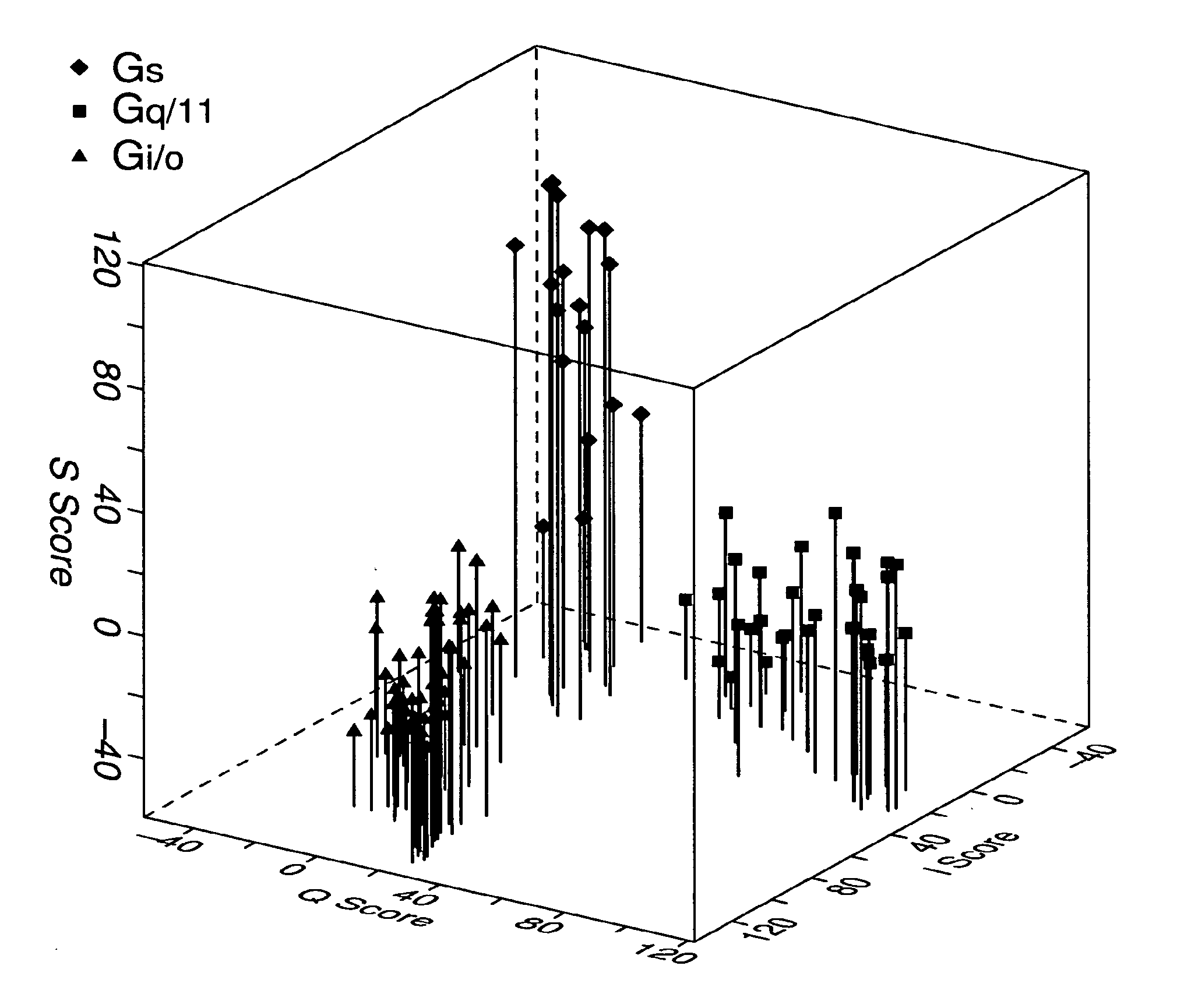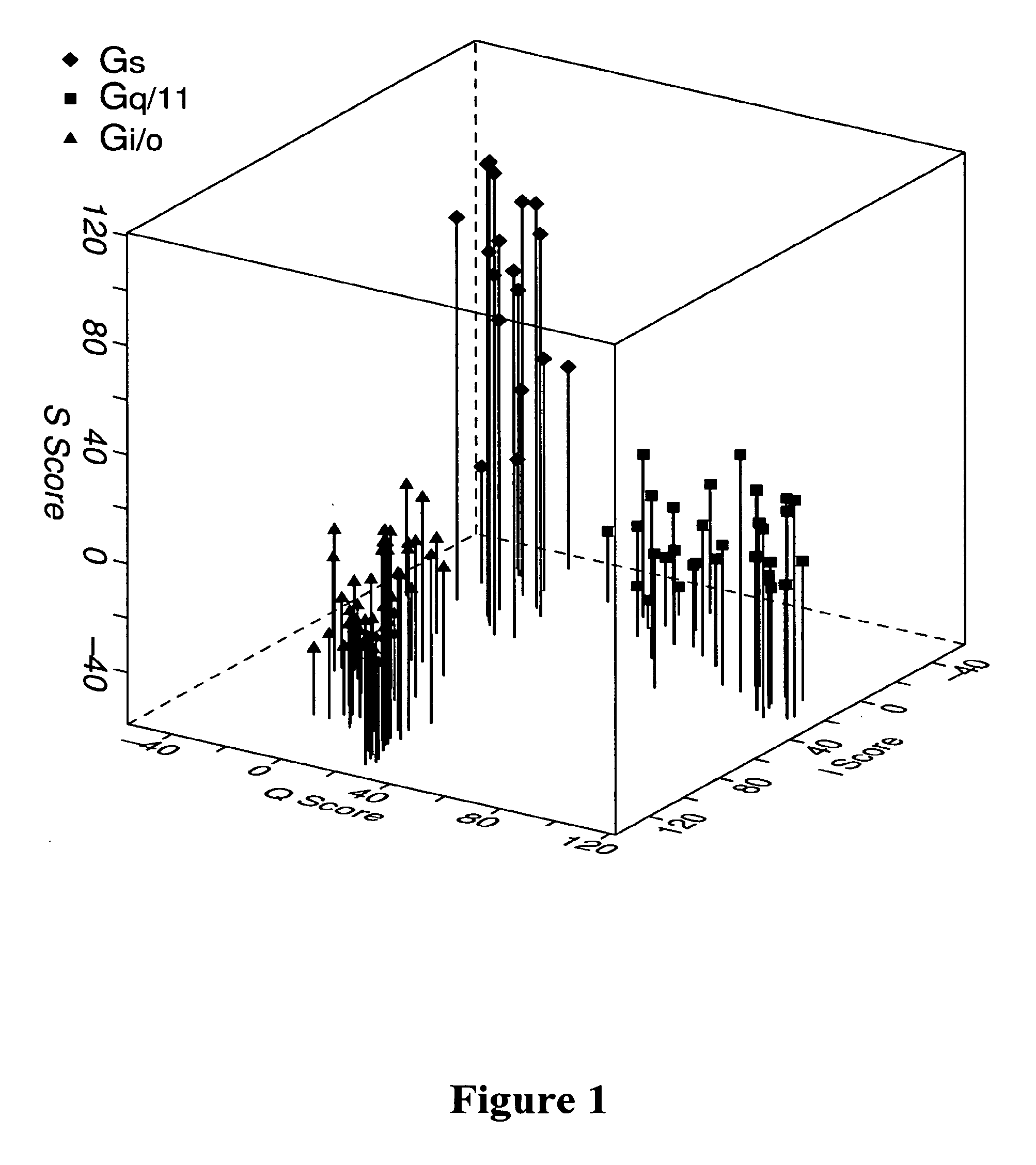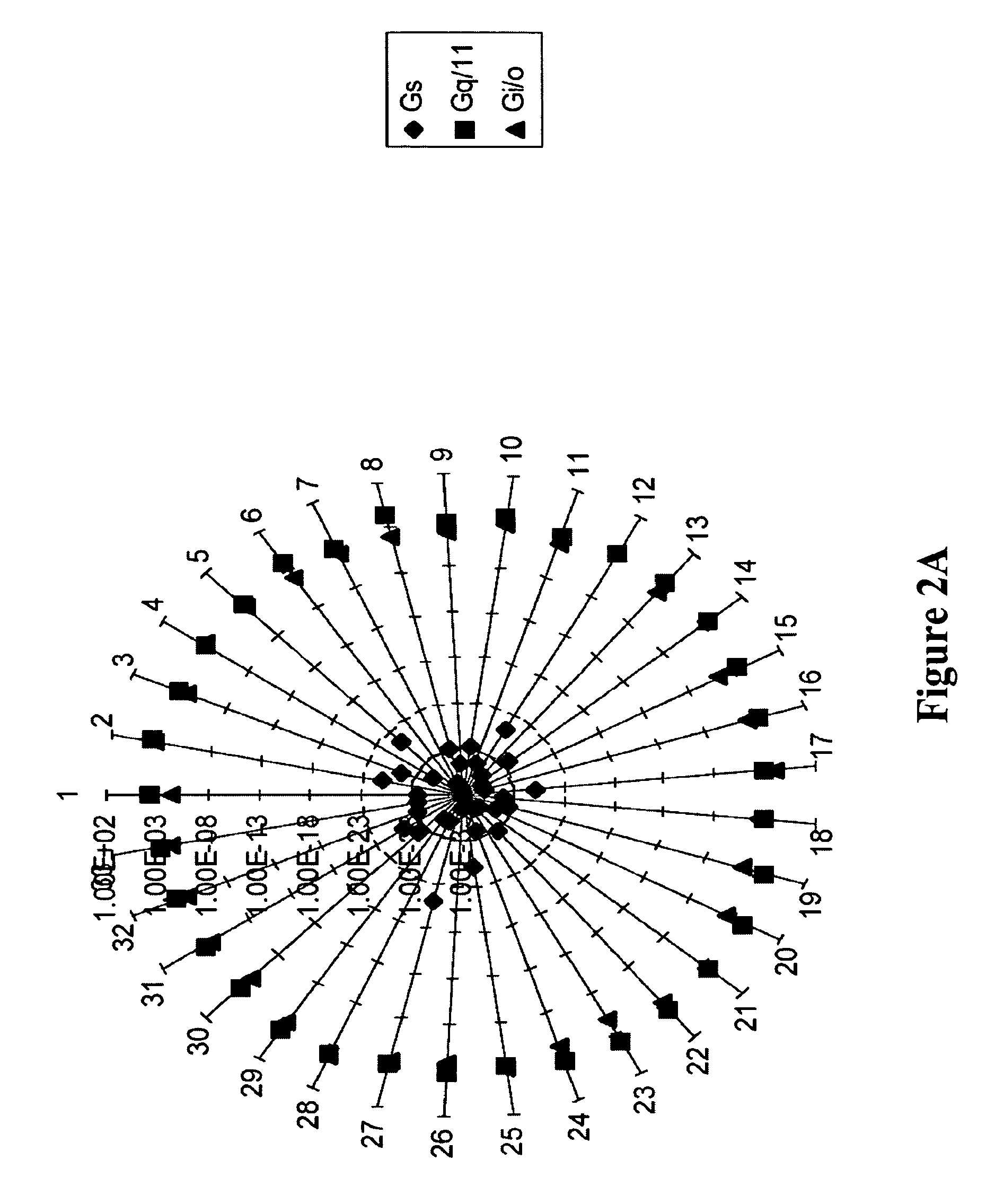Methods and systems for predicting protein-ligand coupling specificities
a protein-ligand and specificity prediction technology, applied in the field of methods, can solve the problems of reducing the specificity of potential drugs, difficult to understand the coupling process, and almost as diverse binding modes of agonists acting on gpcrs
- Summary
- Abstract
- Description
- Claims
- Application Information
AI Technical Summary
Benefits of technology
Problems solved by technology
Method used
Image
Examples
example 1
Data Set and HMMs
[0067]A set of 102 GPCRs with experimentally determined G protein coupling specificities were selected. The G12 / 13-class of GPCRs were not included in the study. For simplicity, GPCRs that are known to be promiscuous in coupling were not included in the set. Multiple sequence alignments for the 3 subsets, Gi / o-, Gq / 11-, or Gs-classes containing 49, 34 and 19 sequences, respectively, were generated using T-Coffee followed by manual curation of the alignments. Transmembrane (TM) helices of these proteins were predicted using TMHMM (Krogh, et al., J. MOL. BIOL., 305:567-580 (2001)) and in the case of those proteins with fewer than 7 predicted TM helices, TopPred (Claros and Heijne, supra) was used to predict TM helices missed by TMHMM. Blocks of sequences representing the extracellular loops and the predicted TM helices except 2 residues at the cytosolic end of each TM helix were removed from the multiple sequence alignments, leaving behind amino acid residues referred...
example 2
Discriminant Analysis
[0071]Discriminant analysis was used to assess the rate of misclassifications based on HMM assigned scores. The means of scores Si, Sq, and Ss were computed for each sequence. Scores Si, Sq, and Ss were HMMER-assigned scores against Gi / o-, Gq / 11, and Gs-specific HMMs, respectively. The data set of mean scores was used in the discriminant function analysis.
[0072]Considering a simple example of two classes A1 and A2 defined in a space Ω, each class Ai has density function ƒi and prior probability πi. To solve the classification problem is to find a boundary that divides Ω into regions R1 and R2 such that if an observation falls in Ri, it will be classified as coming from class Ai. The aim is to minimize the total probability of misclassification
π2∫R1ƒ2dω+π1∫R2ƒ1dω.
By rewriting the above formula as
π1+∫R1(π2ƒ2−π1ƒ1)dω,
the probability is minimized by including in R1 the points such that π2f21f1 and excluding from R1 the points such that π2f2>π1f1. Continuity of the d...
example 3
Prediction of the Coupling Specificity of GPCRs
[0074]For building and validating the model to predict GPCR-G protein coupling, 49 Gi / o, class, 34 Gq / 11 class, and 19 Gs class of GPCR sequences were used, which had average sequence identities of 26%, 22%, and 24%, respectively, within the cytosolic domain. The most related pair of sequences within these sets had 95%, 82%, and 72% identity and the most unrelated pair had 8%, 4%, and 11% identity within the cytosolic domain of Gi / o, Gq / 11, and Gs classes. To avoid bias in segregating training and test sets, training and test sequences were chosen at random and the process was iterated 100 times to dynamically change the contents of the two sets between iterations. Thus in each iteration three HMMs, one for each class, and a test set containing sequences from all three classes, but none included in the training set were created. During the course of these 100 iterations, sequences belonging to the Gi / o, Gq / 11, and Gs classes were tested...
PUM
| Property | Measurement | Unit |
|---|---|---|
| conformational changes | aaaaa | aaaaa |
| stable | aaaaa | aaaaa |
| chemical nature | aaaaa | aaaaa |
Abstract
Description
Claims
Application Information
 Login to View More
Login to View More - R&D
- Intellectual Property
- Life Sciences
- Materials
- Tech Scout
- Unparalleled Data Quality
- Higher Quality Content
- 60% Fewer Hallucinations
Browse by: Latest US Patents, China's latest patents, Technical Efficacy Thesaurus, Application Domain, Technology Topic, Popular Technical Reports.
© 2025 PatSnap. All rights reserved.Legal|Privacy policy|Modern Slavery Act Transparency Statement|Sitemap|About US| Contact US: help@patsnap.com



